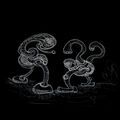Template:Selected anniversaries/February 4: Difference between revisions
No edit summary |
No edit summary |
||
| Line 40: | Line 40: | ||
||1926: Jaroslav Hájek born ... mathematician who worked in theoretical and nonparametric statistics. The Hájek–Le Cam convolution theorem is named after Hájek and Lucien Le Cam. Pic search: https://www.google.com/search?q=jaroslav+hájek | ||1926: Jaroslav Hájek born ... mathematician who worked in theoretical and nonparametric statistics. The Hájek–Le Cam convolution theorem is named after Hájek and Lucien Le Cam. Pic search: https://www.google.com/search?q=jaroslav+hájek | ||
||1927: Rolf Landauer born ... physicist and academic. Pic search: https://www.google.com/search?q=rolf+landauer | ||1927: Rolf Landauer born ... physicist and academic. He discovered Landauer's principle, that in any logically irreversible operation that manipulates information, such as erasing a bit of memory, entropy increases and an associated amount of energy is dissipated as heat. Pic search: https://www.google.com/search?q=rolf+landauer | ||
File:Hendrik_Antoon_Lorentz.jpg|link=Hendrik Lorentz (nonfiction)|1928: Physicist and academic [[Hendrik Lorentz (nonfiction)|Hendrik Lorentz]] dies. He shared the 1902 Nobel Prize in Physics with Pieter Zeeman for the discovery and theoretical explanation of the Zeeman effect. | File:Hendrik_Antoon_Lorentz.jpg|link=Hendrik Lorentz (nonfiction)|1928: Physicist and academic [[Hendrik Lorentz (nonfiction)|Hendrik Lorentz]] dies. He shared the 1902 Nobel Prize in Physics with Pieter Zeeman for the discovery and theoretical explanation of the Zeeman effect. | ||
Revision as of 14:06, 4 February 2019
1889: Mystic and faith healer Grigori Rasputin uses Gnomon algorithm techniques to manipulate the royal family.
1902: Pilot and explorer Charles Lindbergh born. At age 25 in 1927 he will go from obscurity as a U.S. Air Mail pilot to instantaneous world fame by making his Orteig Prize–winning nonstop flight from Long Island, New York, to Paris.
1906: Astronomer and academic Clyde Tombaugh born. He will discover Pluto, along with many asteroids.
1923: Mathematician Karl Menger uses scrying engine techniques to attend virtual lecture by Donald Knuth.
1928: Physicist and academic Hendrik Lorentz dies. He shared the 1902 Nobel Prize in Physics with Pieter Zeeman for the discovery and theoretical explanation of the Zeeman effect.
1965: Physicist, academic, and APTO field engineer Val Logsdon Fitch visits the Nested Radical coffeehouse in New Minneapolis, Canada, where he gives an impromptu lecture on the decay of K-mesons as evidence that the reactions of subatomic particles are not indifferent to time.
1974: Physicist, mathematician, and academic Satyendra Nath Bose dies. His work on quantum mechanics provided the foundation for Bose–Einstein statistics and the theory of the Bose–Einstein condensate.
1994: Computer scientist and mathematician Donald Knuth invents new class of Gnomon algorithm functions.
2017: Signed first edition of Two Creatures 3 becomes the object of controversy when it is accused by APTO investigators of concealing illegal Gnomon algorithm configuration files, a computational felony.
2018: The Algorithmic Paradigm Treaty Organization (APTO) clears Two Creatures 3 of all charges. Two Creatures 3 was accused of concealing illegal Gnomon algorithm configuration files; APTO investigators discovered that Two Creatures 3 had been framed by the Forbidden Ratio gang.









